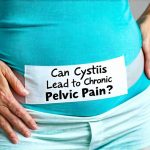Chronic Pelvic Pain Syndrome (CPPS) encompasses a constellation of symptoms – pain in the pelvic region, often accompanied by urinary difficulties, sexual dysfunction, and psychological distress – that significantly impacts quality of life for millions worldwide. It’s crucial to understand that CPPS isn’t typically caused by easily identifiable structural abnormalities; it’s frequently described as a functional disorder, meaning the source is related to how nervous systems and pain pathways operate rather than physical damage. This makes diagnosis challenging and treatment complex, often requiring a multidisciplinary approach involving physicians, therapists, and potentially mental health professionals. Because of its multifaceted nature, medication plays a vital – though not always curative – role in managing symptoms and improving functionality.
The frustrating aspect for many patients is that there isn’t a “one-size-fits-all” solution. Treatment strategies are highly individualized, tailored to the specific symptoms experienced by each person and considering underlying factors like anxiety or depression which often co-exist with chronic pain conditions. Medications used aren’t necessarily aimed at “curing” CPPS (as a definitive cure is often elusive) but rather at alleviating specific symptoms – reducing pain intensity, improving bladder control, addressing associated psychological issues, and ultimately helping individuals regain some measure of control over their lives. This article will explore the common medications utilized in CPPS management, emphasizing that all treatment decisions should be made in consultation with a qualified healthcare provider.
Pharmacological Approaches to Symptom Management
The core principle behind medication choices for CPPS is symptom targeting. Since pain can manifest differently and have various contributing factors (musculoskeletal tension, nerve hypersensitivity, inflammation, psychological distress), medications are often chosen based on which symptoms are most prominent in the individual patient. For example, someone experiencing primarily urinary frequency and urgency might benefit from different medications than someone whose primary complaint is deep pelvic pain unrelated to urination. Neuropathic pain, a common component of CPPS, particularly influences medication selection. Several classes of drugs can be used independently or in combination, constantly adjusted based on the patient’s response and tolerance. It’s important to remember that many medications initially developed for other conditions have proven effective in managing CPPS symptoms – highlighting the complexity of pain pathways and the repurposing of existing drugs.
A significant challenge in treating chronic pain is avoiding medication dependence and minimizing side effects. Healthcare providers often start with lower doses and gradually increase them as needed, closely monitoring patients for any adverse reactions. Non-pharmacological approaches—physical therapy, pelvic floor rehabilitation, cognitive behavioral therapy (CBT), mindfulness practices—are also essential components of a comprehensive treatment plan and should be integrated alongside medication to maximize long-term success. The goal isn’t just symptom suppression but fostering self-management skills and improving overall well-being.
Finally, it’s worth mentioning that the placebo effect plays a role in pain management. While not dismissing the physiological basis of CPPS, acknowledging the psychological component and utilizing techniques like positive expectation and patient education can enhance treatment outcomes. Open communication with your healthcare provider about concerns and expectations is crucial for building trust and optimizing the therapeutic relationship.
Pain Relievers & Anti-Inflammatories
Nonsteroidal anti-inflammatory drugs (NSAIDs) are often a first line of defense, particularly if inflammation is suspected as contributing to pain. – Ibuprofen, naproxen, and celecoxib are commonly prescribed, but long-term use can lead to gastrointestinal issues, cardiovascular risks, and kidney problems. Careful monitoring by a physician is essential. Acetaminophen (paracetamol) may provide some pain relief, particularly for milder cases, but lacks the anti-inflammatory properties of NSAIDs.
For more severe neuropathic pain – pain caused by damaged or dysfunctional nerves – other options are considered. – Tricyclic antidepressants (TCAs), like amitriptyline and nortriptyline, have been shown to modulate nerve signals and reduce chronic pain, even in patients who aren’t depressed. However, they can have significant side effects, including drowsiness, dry mouth, and constipation. – Gabapentin and pregabalin, originally developed as anti-seizure medications, are also effective for neuropathic pain by calming overactive nerves. These medications require careful titration to minimize dizziness and other side effects.
Opioids are generally avoided in CPPS management due to the risk of dependence, tolerance, and limited long-term efficacy for chronic pain conditions. While they may provide temporary relief, their potential downsides often outweigh the benefits. If opioids are prescribed (usually as a last resort), it’s crucial to have a clear plan with your physician regarding dosage, duration, and monitoring for signs of addiction.
Alpha-Blockers & Muscarinic Antagonists
Alpha-blockers are primarily used in patients experiencing urinary symptoms associated with CPPS, particularly if there’s evidence of prostatic inflammation or pelvic floor dysfunction. – Tamsulosin, alfuzosin, and terazosin relax the muscles in the prostate and bladder neck, making it easier to urinate and reducing urgency and frequency. These medications can have side effects like dizziness, low blood pressure, and retrograde ejaculation (semen entering the bladder during orgasm).
Muscarinic antagonists – oxybutynin and tolterodine, for example – are used to reduce bladder overactivity and urinary urgency. They work by blocking acetylcholine receptors in the bladder muscle, decreasing involuntary contractions. – Common side effects include dry mouth, constipation, blurred vision, and cognitive impairment (particularly in older adults). As with other medications, careful monitoring and dosage adjustments are necessary.
These medications don’t address the underlying causes of CPPS but can significantly improve quality of life by alleviating bothersome urinary symptoms. Often they are used alongside pelvic floor rehabilitation exercises to further enhance bladder control and reduce discomfort.
Psychotropic Medications & Adjunctive Therapies
The strong link between chronic pain and mental health underscores the importance of addressing psychological factors in CPPS management. – Selective serotonin reuptake inhibitors (SSRIs) and serotonin-norepinephrine reuptake inhibitors (SNRIs), typically prescribed for depression and anxiety, can also reduce pain perception and improve mood. These medications work by modulating neurotransmitters in the brain that play a role in both pain processing and emotional regulation.
Cognitive Behavioral Therapy (CBT) is often recommended alongside psychotropic medication. CBT helps patients identify and change negative thought patterns and behaviors contributing to their pain experience. – Mindfulness-based stress reduction (MBSR) can also be beneficial, teaching techniques for managing stress and improving coping skills.
Other adjunctive therapies that may be considered include:
1. Biofeedback: Learning to control physiological responses like heart rate and muscle tension.
2. Acupuncture: Stimulating specific points on the body to promote healing and pain relief.
3. Physical therapy: Strengthening pelvic floor muscles and improving posture.
4. Pelvic Floor Rehabilitation: Specialized exercises aimed at restoring function and reducing pain in the pelvic region.
It’s important to emphasize that medication is just one piece of the puzzle when it comes to CPPS management. A holistic approach, incorporating lifestyle modifications (diet, exercise, stress reduction) and psychological support, is essential for achieving long-term relief and improving overall well-being. Remember to always discuss any new medications or treatment plans with your healthcare provider before starting them.





















